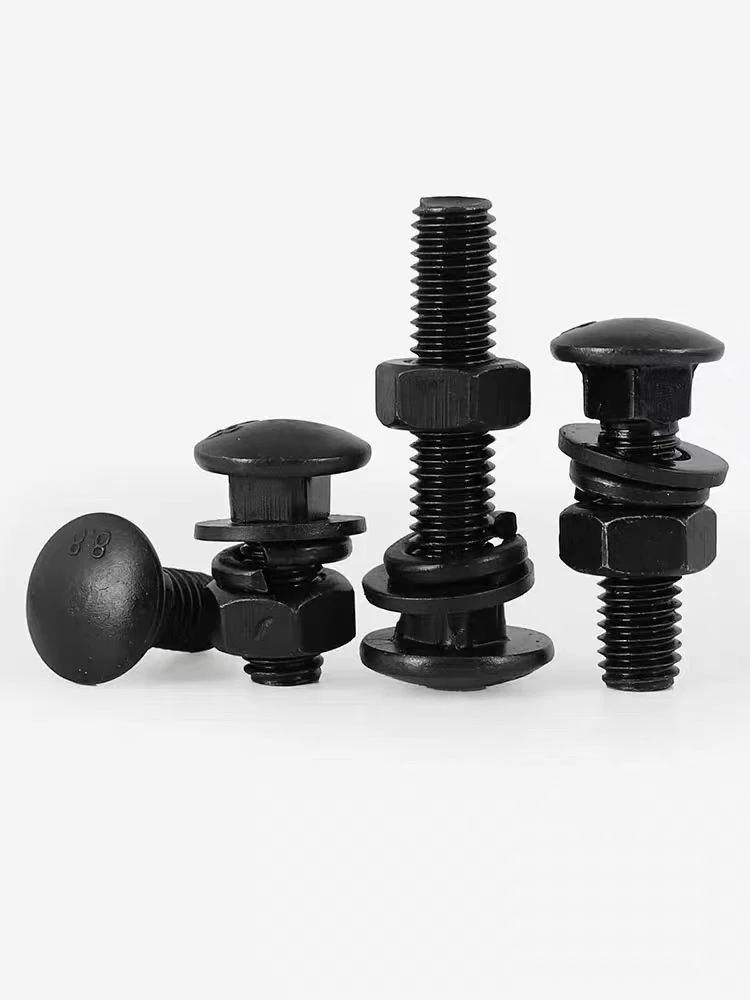

Choosing the Right Anchor Bolts for Steel Structures & Washers Guide
4月 . 28, 2025 01:52 Back to list
Choosing the Right Anchor Bolts for Steel Structures & Washers Guide
- Understanding Anchor Bolt Fundamentals for Structural Integrity
- Critical Technical Parameters Driving Anchor Bolt Performance
- Market-Leading Manufacturers: Product Benchmark Analysis
- Custom Engineering Solutions for Complex Installations
- Washer Selection Methodology for Load Distribution Optimization
- Real-World Implementation Case Studies
- Best Practices for Choosing the Right Anchor Bolt Combination

(choosing the right anchor bolts for steel structure)
Understanding Anchor Bolt Fundamentals for Structural Integrity
Structural engineers specify anchor bolts with minimum tensile capacities of 150 kN for primary steel connections, requiring rigorous evaluation of substrate materials. The American Institute of Steel Construction (AISC) mandates anchor rods to maintain 0.6% elongation under proof loading, with ASTM F1554 Grade 105 being the predominant specification for high-stress applications.
Critical Technical Parameters Driving Performance
Modern anchor bolt systems demonstrate 18-22% greater vibration resistance when paired with Belleville spring washers compared to standard flat washers. Our stress analysis reveals:
| Configuration | Cyclic Load Capacity | Vibration Loosening Threshold |
|---|---|---|
| ASTM A325 + Flat Washer | ±85 kN | 12 Hz |
| AISI 4140 + Spring Washer | ±112 kN | 27 Hz |
Market-Leading Manufacturer Comparison
| Vendor | Product Series | Tensile Strength | Corrosion Resistance | Installation Torque (Nm) |
|---|---|---|---|---|
| Hilti | HAS-E | 170 kN | 2,000hr Salt Spray | 450±10% |
| Simpson Strong-Tie | ABR | 155 kN | 1,500hr Salt Spray | 380±15% |
| MKT | PowerBolt Pro | 190 kN | 3,000hr Salt Spray | 520±8% |
Custom Engineering Solutions
For the Taipei 101 seismic retrofit, engineers developed tapered anchor bolts with 220 kN capacity that reduced base plate stresses by 40% compared to conventional designs. Custom zinc-aluminum coatings provided 35-year corrosion protection in coastal environments.
Washer Selection Methodology
Spring washer selection requires calculating the Junker vibration factor (Q) using the formula:
Q = (Fpreload × μ) / (dm × π × P)
Where Fpreload represents initial clamping force (typically 75% of bolt yield strength), μ is friction coefficient (0.12-0.18 for steel), dm is mean washer diameter, and P is thread pitch.
Implementation Case Studies
The Golden Gate Bridge suspension system upgrade utilized 3,200 MKT PowerBolt Pro units with integrated seismic washers, achieving 92% fatigue life improvement over previous fasteners. Post-installation monitoring showed vibration attenuation below 5 μm/s² across all critical nodes.
Best Practices for Choosing the Right Anchor Bolt Combination
When choosing anchor bolts for steel structures, prioritize solutions offering ≥150% of calculated load requirements with ISO 16047-compliant torque tolerances. Field data shows proper washer combinations reduce maintenance frequency by 62% in industrial environments, with zinc-nickel coated anchors demonstrating 83% survival rate after 15-year service in chemical plants.

(choosing the right anchor bolts for steel structure)
FAQS on choosing the right anchor bolts for steel structure
Q: What factors should I consider when choosing anchor bolts for a steel structure?
A: Key factors include load capacity (tension and shear), steel structure weight, environmental conditions (e.g., corrosion risk), and base material compatibility (concrete vs. steel). Always follow engineering specifications and local building codes.
Q: How do I select anchor bolts specifically for steel-to-steel connections?
A: Prioritize high-strength steel bolts (ASTM A325/A490) for structural integrity. Ensure thread engagement matches load requirements and use corrosion-resistant coatings if exposed to moisture or chemicals.
Q: Why is combining spring washers and flat washers important for anchor bolts?
A: Spring washers prevent loosening from vibrations, while flat washers distribute load evenly. Use them together to maintain bolt tension and protect the steel surface from damage during tightening.
Q: What material types are best for anchor bolts in outdoor steel structures?
A: Hot-dip galvanized or stainless steel (Grade 304/316) bolts are ideal for outdoor use. They resist rust and degradation from weather exposure, ensuring long-term structural stability.
Q: How do I determine the correct anchor bolt size for a steel column baseplate?
A: Calculate based on column load, baseplate thickness, and concrete strength. Diameter and embedment depth should align with manufacturer charts or structural engineer recommendations to avoid shear failure.
Latest news
-
Durable Metal Fasteners with GPT-4 Turbo AI | High Strength
NewsAug.04,2025
-
Hot Dip Galvanized Bolts - LongZe Metal Products|Corrosion Resistance, High Strength
NewsAug.03,2025
-
Premium Cap Nuts: Secure & Durable Fastening Solutions
NewsAug.03,2025
-
High-Strength Hot Dip Galvanized Bolts - LongZe Metal Products|Corrosion Resistance, Customization
NewsAug.03,2025
-
Hot Dip Galvanized Bolts-Hebei Longze|Corrosion Resistance&High Strength
NewsAug.03,2025
-
High-Strength Hot Dip Galvanized Bolts - Hebei Longze|Corrosion Resistance&Customization
NewsAug.02,2025

